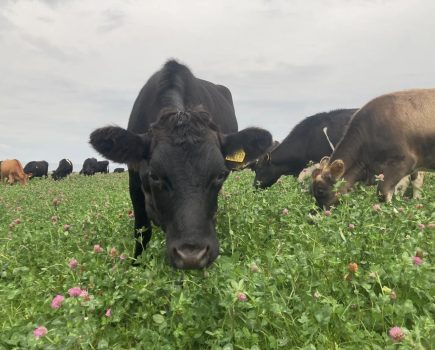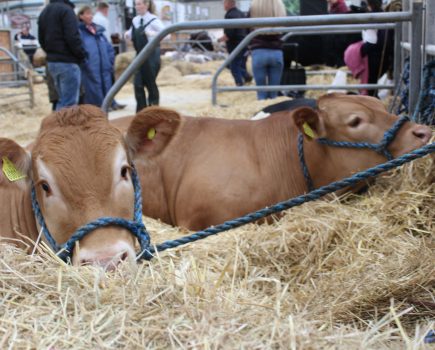Anna Chambers prepares her bees for the winter break
In my first and only beekeeping exam I was asked what bees do over winter – a trick question to which the cheeky examiner hoped I’d reply: hibernate. But I’d done my revision and could tell him that bees do not turn off for the winter, that instead, they get cosy with their sisters and cluster up into a tight ball, surrounding the queen and small amount of brood to keep them warm. As the weather gets colder, the cluster tightens. In warmer weather, the bees break the cluster to venture out and perform certain toiletry requirements as befits a clean and healthy hive. Male drones are expelled from the hive long before winter, their rotund bodies thrown out in August and September before being refused re-entry by the female workers. Women can be quite persuasive when they put their mind to it.It’s intriguing that this highly developed society within which the females work hard to run the hive is, on the whole, exploited by the males of our society. I asked a girl serving in a shop at a honey farm whether she helped with the beehives. She looked at me curiously and told me clearly that ladies can’t be beekeepers. “Why is that?” I questioned innocently, wondering what reason she could offer why I shouldn’t be keeping bees. “When you’re out in the field, there’s nowhere to go to the toilet,” she replied. I can think of a number of reasons why women might not take up beekeeping, but I grew up in the country and the toilet facilities certainly isn’t one of them. Beware, men, the number of lady beekeepers is on the increase. Have no fear though, we won’t be throwing you out of the hive just yet.ForageTemperatures are cooling and days are getting shorter. The range of plants and flowers that bees can forage on is dwindling. Weeds are an invaluable source of food, including late dandelions and fireweed (rose bay willow herb, or Blooming Sally). In gardens the bees make full use of aster, sedum and especially ivy. Last year’s mild autumn saw huge quantities of ivy nectar brought into hives, throwing out its unusual, instantly recognisable and rather unpleasant smell. When flowers are in short supply the sugary juice of fallen fruits provides a good nectar substitute.The bees’ priority for the winter is food and warmth. Food is what the bees have been working so hard to gather all year. The beekeeper, having taken his (or, increasingly, her) share off must replace the depleted stores. Some beekeepers leave sufficient honey in the hive for the bees, others feed a thick syrup made from approximately one pint of water to 2lbs of pure white (not brown) sugar. Syrup must be fed well before the temperature drops late in October as the bees need to evaporate off the moisture before storing it – imagine the results if you hang your washing out to dry on a cold, damp day. A colony of bees can use 60lbs of honey over the winter and it’s important to monitor how stores deplete. Heft both sides of your hive with your hand and guestimate the total weight, or weigh each side with a spring balance and add the two figures together. Record this weight and check again in February. If the hive is over 25lbs down in February, you will need to feed a gallon of thick syrup over a contact feeder. It’s much better to feed now and avoid disturbing the colony in the coldest winter months. A brood box full of brood and stores is sufficient. For large colonies, add a super without a queen excluder so that the cluster doesn’t become disjointed.Warmth comes from the bodies of the colony, and we can help by ensuring that the hive is sound, holes are filled in and cracks mended. Some beekeepers put a bee blanket over the crown board inside the roof, raising it slightly with matchsticks for ventilation. Bees residing in a double walled hive survive colder temperatures than their cousins in the more typical single walled hive as the gap between the inner boxes that the bees live in and the pretty outer sections offer all the benefits of cavity wall insulation. Don’t let the bed bugs biteThe bees also want to remain safe from external predators such as curious badgers, wandering cows, hungry woodpeckers and mice. The position of the hive can help protect against the larger predators and a sheltered spot will also protect against strong winds. Woodpeckers are reluctant to peck through white painted hives, and the monks at Buckfast Abbey exploit this by painting theirs white. If you don’t wish to paint your hives, protect them instead with wire netting or a layer of sacking/plastic to deter the woodpeckers’ beaks. Mice want a warm bed and food to hand for their long winter sleep, and a beehive makes the perfect spot – if they can make it past the guard bees. Mouse guards at the entrance reduce the size adequately to prevent mice and other small creatures entering. Hornets and wasps will patrol the area looking for a free meal of bee with a dessert of honey. Deter them with wasp traps. During this year’s spring inspection, I found a snail built into the wax foundation of a frame – a slow enemy and no match for the bees.As important as warmth, food and protection is the bees’ collective health. Continue to monitor and treat for varroa, acarine and nosema (a fungal disease that causes dysentery). Treatment for nosema can be added to the winter feed if you feed your bees syrup in the autumn. Watch for wax moth and their larvae, especially in empty supers that you remove. Store supers dry with a sheet of newspaper between boxes. Newspaper deters the wax moth larvae – this is possibly due to the chemicals in the papers, or perhaps the depressing news they carry. The National Bee Unit carries information on all the pests and diseases on offer. The latest to be aware of include the small hive beetle (Aethina tumida) and the small parasitic mites Tropilaelaps spp. Although these aren’t with us yet, they’re on their way, just as varroa was 15 years ago.And so to bedWith the bees checked, fed, protected and tucked up for winter, they will remain untouched for the next five or six months. Inside the hive, they gradually block up all the little gaps and holes in the hive with their notoriously sticky bee glue, propolis. As they settle in for the winter, there’s time for us to clean our spare hive parts, tools and other equipment thoroughly before storing. Ensure hives are secured against the forces of nature and predators, checking periodically to see that they’re still upright and in one piece. Prepare new record cards and plan your actions for the year ahead. When that’s over, the bees may not be sleeping or dreaming, but that doesn’t mean the beekeeper can’t. nReferences For more information on pests, diseases, their recognition and treatment contact the National Bee Unit, Sand Hutton, York YO41 1LZ. www.nationalbeeunit.com.
This article is from the September 2006 issue of Country Smallholding magazine. << To order back issues click the link to the left.







